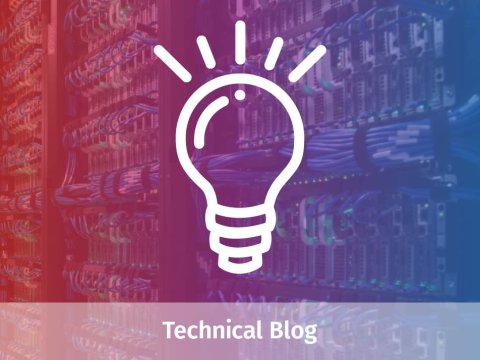Why Your Enterprise Needs to be Thinking About Platform Engineering
by Keiran Holloway, Senior Manager, Professional Services Delivery, Rackspace Technology
Introduction
Platform engineering is a term that is being embraced by companies looking to adopt the cloud quicker and in a more consistent fashion, and for good reason. As businesses continue to evolve in the digital age, the way we approach the development and management of technology platforms is also undergoing a significant transformation.
The crux of platform engineering lies in its aim to create a comprehensive, streamlined, and highly efficient environment for software development and operations. This approach prioritizes automation, integration, and continuous delivery, allowing for rapid scaling and ensuring that infrastructure can keep pace with the ever-increasing demands of business and technology.
From past to present: the evolution of infrastructure
The table outlines a clear progression from a past dominated by dedicated infrastructures and manual deployment mechanisms to a present where cloud services, infrastructure as code (IaC), and CI/CD pipelines are becoming the norm.
Infrastructure
In the past, infrastructure was often dedicated and static, requiring significant capital expenditure and long lead times to scale or change. In contrast, the present has embraced cloud-based models that combine traditional service-based approaches with cloud-native solutions, offering more flexibility and agility.
Deployment mechanism
Deployment mechanisms have evolved from manual processes, which are slow and error-prone, to IaC and CI/CD pipelines. These automated pipelines not only accelerate deployment but also ensure that the same procedures are applied across all environments, greatly reducing the chance of human error and inconsistencies.
Architecture patterns
The transition from monolithic to microservices architecture is perhaps one of the most profound shifts in platform engineering. Monolithic architectures, which bundle all services into a single, indivisible unit, are giving way to microservices, which break down applications into smaller, interconnected services. This modularity allows for easier updates, quicker deployments, and a more resilient system overall.
Complexity
As we embrace these new technologies, the complexity of managing them inevitably increases. However, this complexity brings with it a higher degree of control and optimization, allowing organizations to create more sophisticated, responsive platforms
Provisioning lead time and deployment frequency
There has been a dramatic reduction in provisioning lead time — from weeks or months to days, or even on-demand. Deployment frequency has undergone a similar revolution, moving from weeks or months to daily deployments, allowing businesses to respond to market changes and customer feedback with unprecedented speed
Change failure rate and business relevance
The change failure rate has significantly decreased from over 60% in the past to 15-25% today, thanks to automated testing and deployment strategies. As a result, the relevance of business technology has shifted from merely supporting business processes to being core to the business itself.
The future of platform engineering
Looking forward, the table suggests a future with a bias toward a cloud-native approach. This indicates a preference for technologies that are specifically designed for cloud environments, which offer even greater scalability, resilience, and efficiency.
Revolutionizing infrastructure management
Platform engineering is not just about adopting new technologies; it's about a fundamental shift in how businesses view and manage their infrastructure. By adopting platform engineering practices, businesses can enjoy:
- Faster time to market: Automated pipelines and on-demand resources enable businesses to move from concept to production more quickly.
- Increased efficiency: Resources can be provisioned and scaled as needed, reducing waste and cost.
- Higher reliability: Cloud-native solutions and microservices architectures enhance the resilience and availability of applications.
- Improved security: Consistent deployment mechanisms and infrastructure as code helps maintain security standards across the board.
As we navigate this landscape, it's evident that platform engineering is revolutionizing infrastructure management. It is not merely a trend but a paradigm shift that is redefining the very fabric of technology within businesses, setting a new benchmark for innovation, agility, and operational excellence.
Re-thinking the operating model with platform engineering
The adaptation of new technologies is a pivotal moment for rethinking operating models, particularly within the domain of cloud computing and platform engineering. Companies eager to reap the benefits of the cloud paradigm often establish a cloud center of excellence (CCoE) or cloud hub to centralize expertise and governance. However, this centralized function, while beneficial in some respects, brings with it a set of challenges that organizations must navigate to remain agile and efficient.
Centralized IT service/cloud hub as a bottleneck
The centralized cloud hub or cloud center of excellence (CCOE) has emerged as a pivotal structure within modern IT organizations. It's designed to guide and govern cloud adoption and operations. However, as the bridge between a wide array of tools and the developers who use them, this centralized function can quickly become overwhelmed, acting as a bottleneck in the flow of operations. This is especially true when there's a surge in demand for new services or when rapid feature enhancements are released by cloud providers.
Embracing platform engineering principles
Self-Service Tools
Self-service tools like Backstage are a foundational tenet of platform engineering. They empower developers by providing a user-friendly interface where they can access the entire ecosystem of tools and services without direct intervention from the central IT team. This not only accelerates development workflows but also alleviates bottlenecks caused by centralized control points.
Democratization of technology
The philosophy of technology democratization is about making tools and infrastructure accessible and user-friendly for all developers, regardless of their expertise. This involves providing sensible defaults that guide developers towards best practices while offering the flexibility to customize and scale as needed. The goal is to enable teams to make the most of technology with minimal friction, fostering innovation and agility.
Governance with security
A shift to platform engineering does not diminish the importance of governance and security; instead, it embeds these considerations into the implementation process itself. The platform should be designed to enforce policies, manage permissions and control access seamlessly. By building governance into the platform, organizations ensure that compliance is maintained without impeding the speed of development.
Workload observability
Intrinsic workload observability is another critical aspect of platform engineering. Observability should be baked into the platform from the outset, offering developers real-time insights into their applications and services. This allows for proactive monitoring, efficient troubleshooting and informed decision-making, contributing to the reliability and performance of the entire system.
By focusing on these platform engineering principles, organizations can create a robust framework that supports the rapid pace of cloud innovation while maintaining the necessary guardrails for security and compliance. This approach facilitates a dynamic and responsive IT environment that aligns with the evolving needs of developers and the business.
Take the next steps with platform engineering
Platform engineering offers a blueprint for organizations looking to modernize their IT infrastructure. These principles closely align with the needs of the developer and broader organization. As cloud technologies advance at a rapid pace, your business must adapt as well. Rackspace can help — speak to us about an ideation workshop focused on how to adopt platform engineering within your organization.

Recent Posts
Why Your Enterprise Needs to be Thinking About Platform Engineering
April 18th, 2024
The Latest Rackspace Technology Innovation in Platform Engineering: Azure Custom Actions for Backstage
April 15th, 2024
Bootstrapping AWS Accounts for Seamless Backstage.io Integration
March 30th, 2024
Related articles

Empowering Innovation: How Platform Engineering Catalyzes Enterprise Growth
Learn More

Platform Engineering: Revolutionizing Development Processes with the Adoption of Backstage
Learn More
Platform Engineering: Revolutionizing Development Processes with the Adoption of Backstage

The Latest Rackspace Technology Innovation in Platform Engineering: Time Saver for Backstage
Learn More
The Latest Rackspace Technology Innovation in Platform Engineering: Time Saver for Backstage

